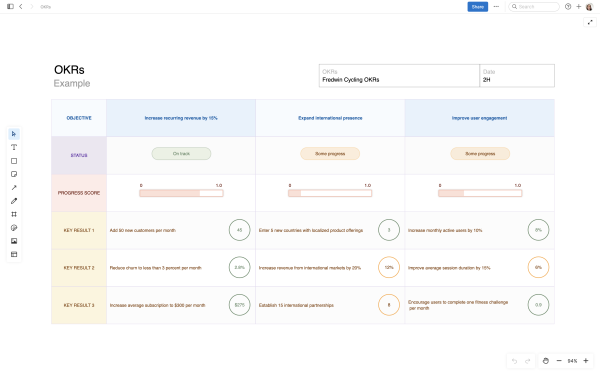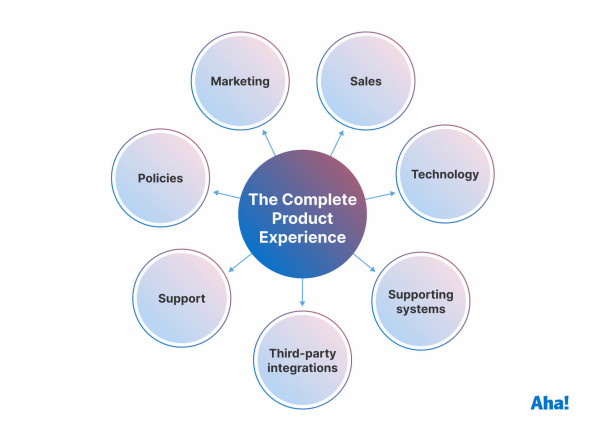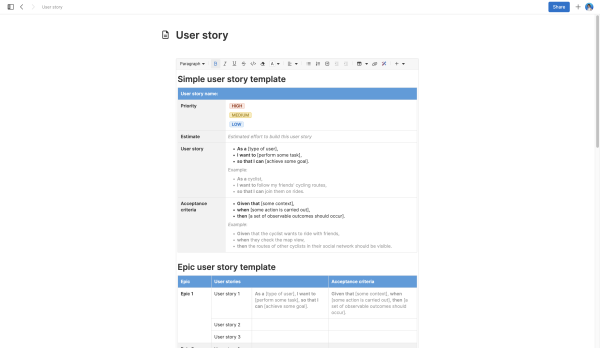What is a product? Tips on how to launch a lovable product
Last updated: October 2023
A product is any item or service you sell to serve a customer’s need or want. They can be physical or virtual. Physical products include durable goods (like cars, furniture, and computers) and nondurable goods (like food and beverages). Virtual products are offerings of services or experiences (such as education, software, and streaming services). A product may also be a hybrid — including both physical and virtual elements (like a kitchen appliance with its own mobile app). Hybrid products are becoming more common as traditionally analog products incorporate digital technology as a way to better reach and serve customers.
These categories can help us understand different types of products. But they are not hard and fast rules. For example, software can be considered both a product and a service. Traditionally, you would purchase a physical version of the program and install it on your computer — but today most software products are sold virtually. This approach uses a web-based delivery model and customers pay a recurring subscription fee to access the software. This how the term software-as-a-service (SaaS) originated.
Build product plans in Aha! Roadmaps. Sign up for a free 30-day trial.
As you will learn in this guide, there is a lot more to a product than its at-first-glance attributes and what the customer thinks they are paying for. Jump ahead here:
Characteristics of a product
A live concert, shampoo, and a fitness app. These are all examples of products but the similarities between them are few. This is part of what makes product development so exciting — endless possibilities exist to create new offerings for all kinds of customers.
Though product characteristics vary widely, a few basic ones are universal. A product is:
Intended for customers. This differentiates products from projects or anything else you may produce for your own use or enjoyment. Products are typically created with the intent of being sold and consumed by someone else — whether that is an individual consumer or a business.
Created to provide benefits to a market. Identifying a market need and meeting it can be challenging — but at a base-level, a product should provide some sort of advantage to users.
Exchanged for value. The most typical value exchange is money — meaning, products have a price and can be bought and sold. In some cases products will be offered in exchange for feedback, exposure, a trade, or other forms of value.
Types of products
Beyond physical, virtual, and hybrid, products can be classified in other ways. You can start by splitting products among three major customer categories — consumer, business, and industry.
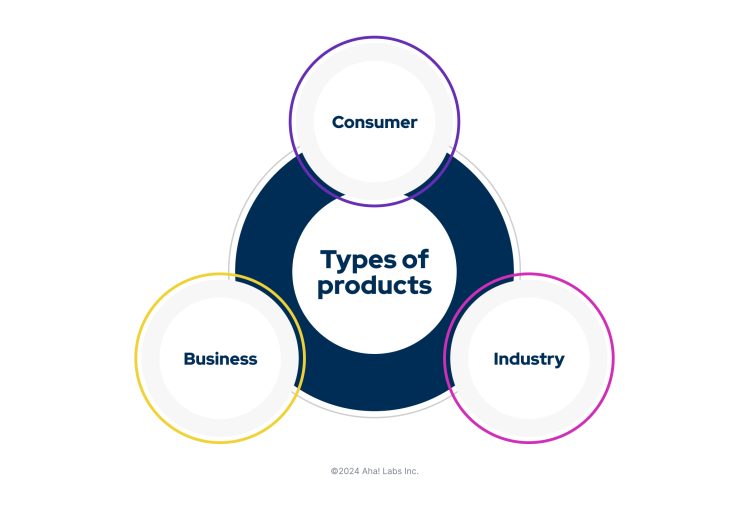
Consumer products
Consumer products, or business-to-consumer (B2C) products, are sold to end-users and intended for personal use. The consumer product category is commonly broken down further by purchasing behavior — as different characteristics can influence the way customers buy products. The table below explains the four major consumer product types by purchasing behavior:
Purchasing behavior | Description |
Convenience | Convenience products are purchased frequently and with little planning or effort. They are widely available, easy to obtain, and typically have a low price. Example: Magazines, on-demand software and services |
Shopping | Shopping products are purchased less frequently than convenience products and have a higher price. Buyers compare attributes such as quality, style, and price before making a purchasing decision. Example: Clothing brands, airline tickets |
Specialty | Specialty or niche products have features that appeal to a specific group of customers. This type of product requires more targeted promotion to reach the right people. Example: Vertical market software such as real-estate or banking applications |
Unsought | Unsought products have little awareness or proactive demand among customers. Because customers do not perceive an immediate need for these products, the benefits must be directly promoted to generate interest. Example: Life insurance, reference books |
Business products
Business products, or business-to-business (B2B) products, help other companies create their own products or operate their business. Business products can also be referred to as horizontal market products — present in multiple industries and supporting a wide range of business needs. Examples of business products include raw materials, equipment, supplies, business services, and software.
Business software is a major sub-category of B2B products. Examples include accounting, customer relationship management (CRM), human resource management, and product development software. These applications can be further categorized by the size of the company that uses them (e.g., enterprise software).
Industry products
Industry products, or vertical market products, serve broad business sectors such as energy, healthcare, financial services, or information technology. Rather than cater to a large variety of use cases, industry products are tailored to meet the needs of a specific industry (e.g., a healthcare application for managing patient data).
Related guides:
Note that a product can have multiple types of customers — but understanding how each type of buyer will purchase and use a product is foundational to your product and marketing strategy.
Understanding the Complete Product Experience (CPE)
A product is more than just the item or service that is sold. Of course, the features and benefits a product provides are important — but real product value is all the work you do to strategize, build, launch, market, sell, and support an offering. For product builders, this means you need to consider and optimize every way a customer interacts with your product and company.
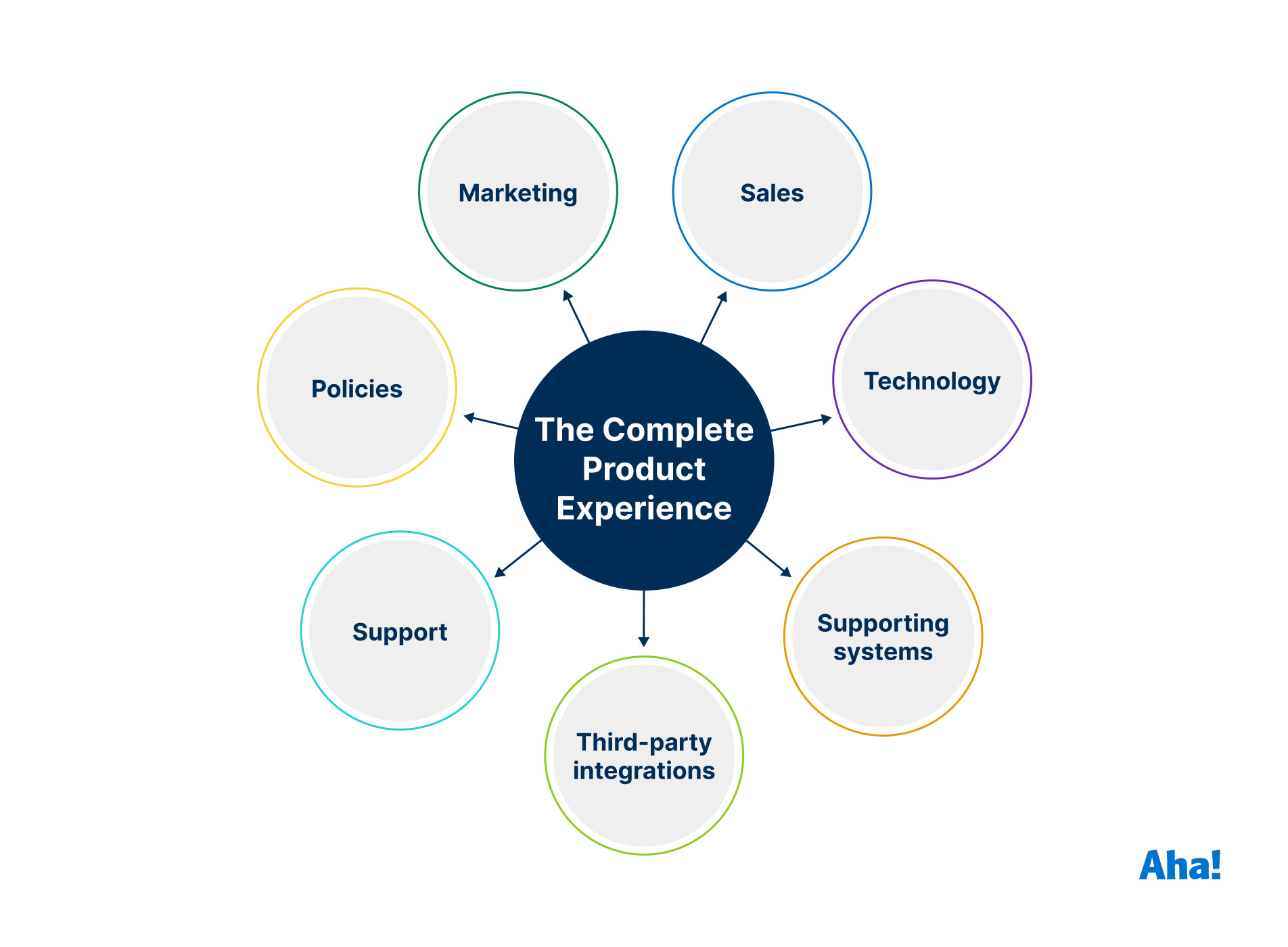
This concept is called the Complete Product Experience (CPE). Brian de Haaff, Aha! co-founder and CEO, defines the CPE in Lovability — the bestselling book for company and product builders. The following is an excerpt from Lovability:
1. Marketing is how potential customers learn about your product and determine if it might be a fit to help them solve their problem. This is taking on new forms as people grow increasingly connected: social platforms, online reviews, and company-published content.
2. Sales is the process of prospects learning more about the product from a company representative and possibly using it in a trial. They educate themselves about the product and get the information they need to determine if the solution is right for them.
3. Technology refers to the core set of features that customers pay for. In our case, that is the online software that they log into our servers to use. For others, it could be the actual phone, credit card, or even an insurance policy that is purchased. However, technology should represent not the end of a transaction but the beginning of a transparent, interactive relationship.
4. Supporting systems make it possible to deliver the product. These are internal systems that the customer rarely sees but which can have a huge impact on their overall happiness: billing, provisioning, analytics, and more. For example, if you call customer support and the representative always seems to have a comprehensive history of your purchases and support issues at their fingertips, you can thank supporting systems.
5. Third-party integrations enable new products to fit into how the customer already lives and works. All products exist in an ecosystem, so they have to play nice with the other products the customer is already using and the way that customer already works.
6. Support is everything from answering customer questions to training and even helping customers integrate your product with their existing systems. Support describes all activity that helps the customer achieve something meaningful with a product.
7. Policies are the rules that companies set to govern how they do business. At their best, they provide a framework for employees to be their best. At their worst, they create unresolvable frustration that drives customers to ask “to speak with the manager.”
Ultimately, the product is the summation of all touchpoints that form the relationship between your company and the customer. It is important to consider how the components described above interact with each other. Creating a seamless experience requires bringing together product, marketing, sales, and support teams to optimize each step of the customer’s journey and create lasting joy.
Read more: What is the Complete Product Experience?
How to launch a new product
Product launches are exciting. But they are only one piece of product development — the massive body of work encompassing everything it takes to bring a new product to life. This includes the "active" building and launch activities as well as the behind-the-scenes strategizing, planning, and analysis.
For most businesses, there are seven stages of developing a new product.
1. Strategize | Define goals and initiatives |
2. Ideate | Brainstorm and capture promising ideas |
3. Plan | Refine ideas based on strategic goals, estimated product value, and team capacity |
4. Showcase | Share roadmaps and go-to-market plans with stakeholders |
5. Build | Deliver new functionality via agile development |
6. Launch | Bring those exciting new capabilities to market |
7. Analyze | Assess realized product value by tracking customer usage and love |
It requires a concerted effort throughout every stage of the process to successfully deliver a new product. When you are approaching the launch phase, a product launch checklist can help make sure everything goes according to plan.
FAQs about products
What are examples of products? A smartphone, a cup of coffee, a certification class, and a fitness app are all examples of products. Almost anything a business sells — whether physical or virtual — qualifies as a product. But it is important to remember that products represent the entire experience that customers share with your company, not just the item or service itself. Read more about the Complete Product Experience.
What are product roles? Behind every great product is a great team. The core product development team typically includes roles from six different functions: innovation, product management, project management, product marketing, engineering, and operations. Individual roles and job titles will vary within these groups. Read more about product roles.
What tools can you use to manage products? Product development teams use a wide range of tools to manage products — from ideas portals to roadmapping software and agile development tools. Since building products is such a complex process, it is common to have a full product tech stack or software suite. Read more about product development software.
